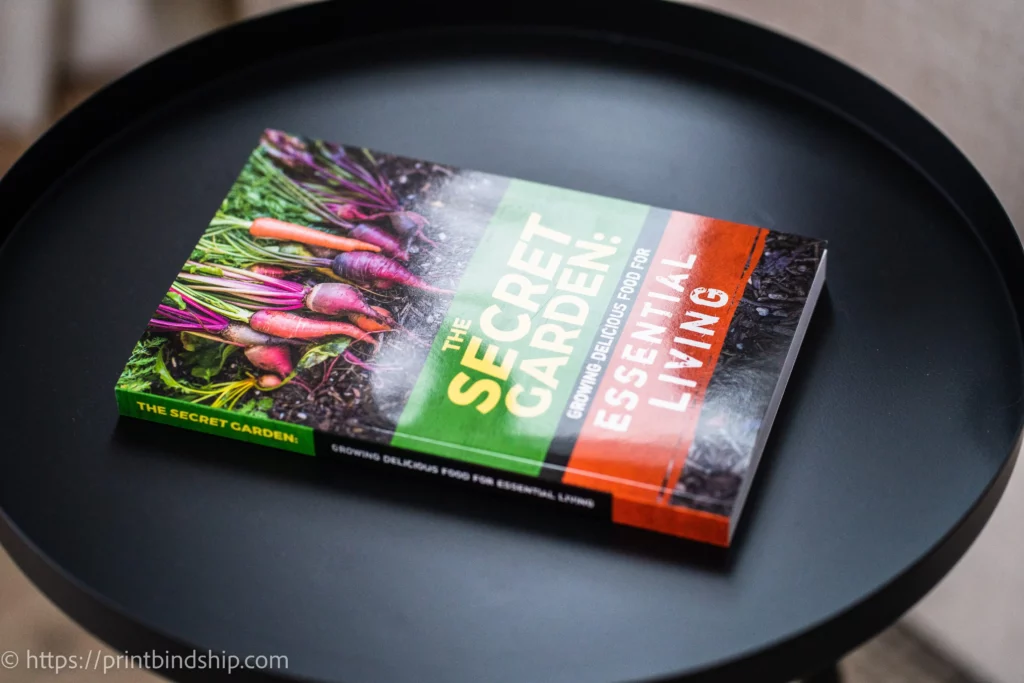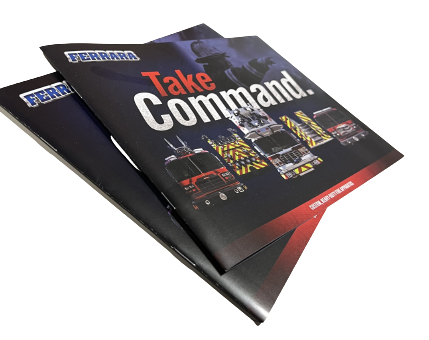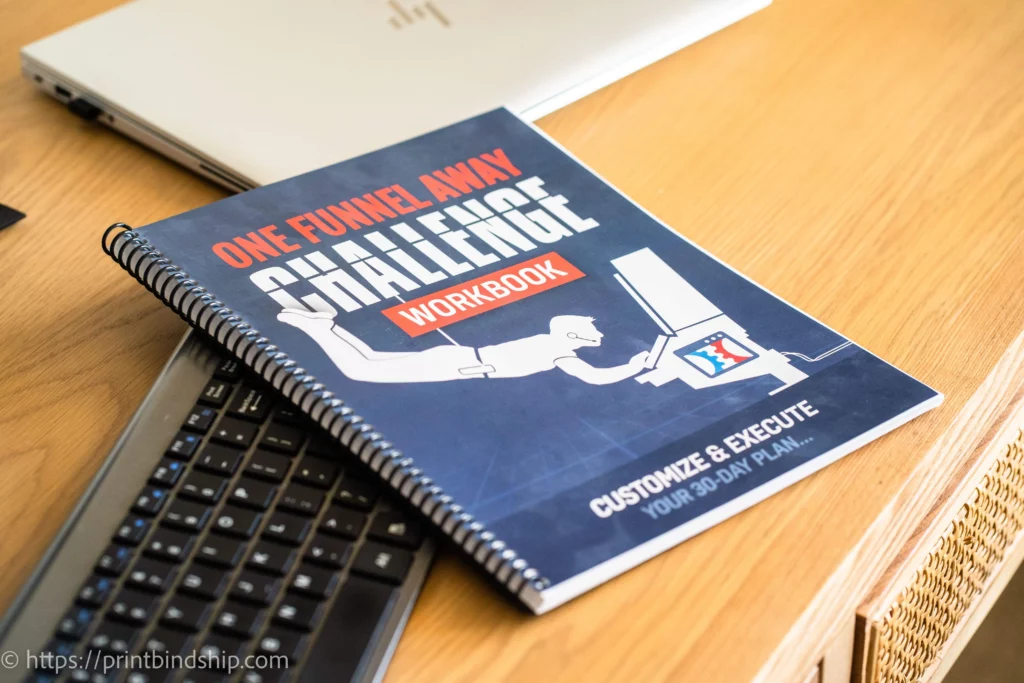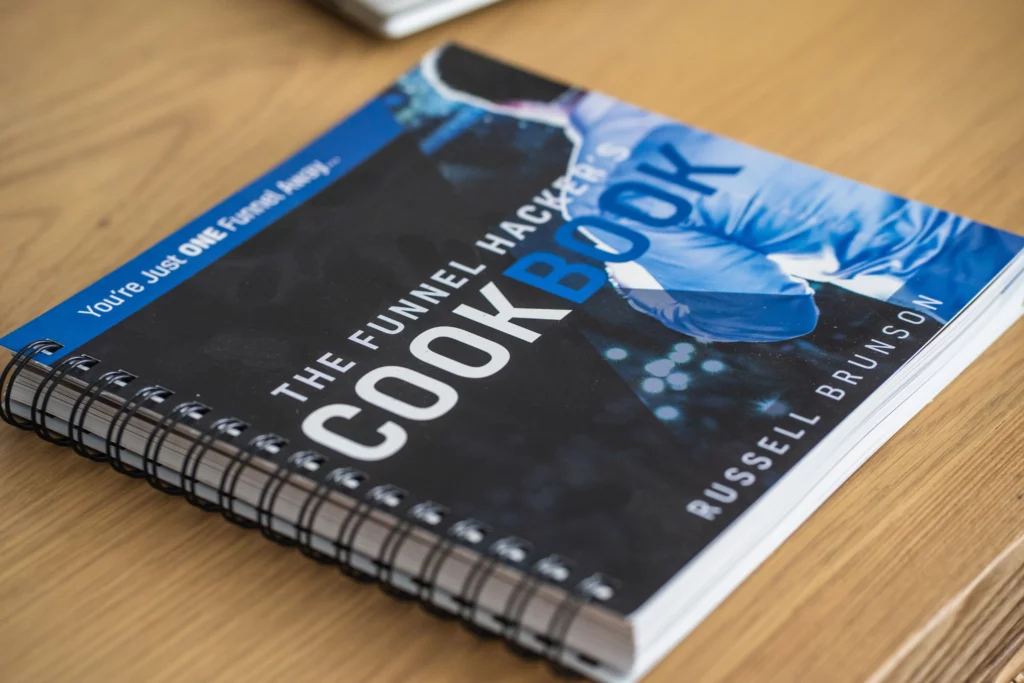Bookbinding is the process of assembling printed pages and securing them together along one edge to form a book. It involves folding the printed pages into signatures or gatherings, stitching or gluing them together, and then attaching a protective cover.
Common types of bookbinding methods include perfect binding, where pages are glued to a rigid cover, and case binding for hardcover books with sewn signatures. Bookbinding adds stability and durability to printed content while also allowing for a variety of design options for the book’s cover and spine. It transforms loose printed pages into a cohesive, readable book format suitable for distribution.
In this guide, we’re going over everything to know about bookbinding – including the different types of bookbinding and how to choose the right one for your work.
Need a more personalized approach? Get in touch with the book printing and binding experts at Print Bind Ship to get feedback on exactly the type of bookbinding that would work best for your project. Reach out for a free quote!
4 Types of Bookbinding
Despite the growing popularity of eBooks and digital printing, there is still much value to be had from printing physical books. Some readers just prefer tangible books. In other cases, such as with employee manuals or technical manuals, a printed reference may be necessary. If you’re publishing a workbook-style piece or something you want people to be able to notate, printing a hard copy might also be beneficial.
In short, there are several different types of binding to choose from, and each has its pros and cons.
1. Case Binding
Case binding is a traditional bookbinding method commonly used for hardcover books. It involves sewing signatures (folded groups of pages) together, attaching them to a rigid cover made of binder’s board, and then casing them into a cloth or paper cover. The sewn book block and cover are connected using sturdy endsheets or hinges. Case binding produces a strong, durable book with a smooth spine that can withstand frequent use and shelving. This binding technique is often seen in hardcover novels, textbooks, and reference books where longevity and the ability to open fully are important factors.
Case binding is often referred to as hardcover binding and is one of the best bookbinding options for a high-quality look and feel. It’s ideal for collector’s books, coffee table books, high-end publishing, and anyone who wants the most professional, high-quality bookbinding method. They often require printing minimums, however, so hardcover books might not be ideal for small runs.
Pros
- An impressive presentation that offers an air of sophistication and quality
- Will lay flat without needing to be held open
- More durable design can garner higher retail pricing
Cons
- Case binding is the most expensive option
- These books tend to be quite heavy, increasing shipping costs in some cases
- The larger, bulky style may not be ideal for portability
2. Perfect Binding

This method of binding, also known as softcover or paperback binding, offers a more affordable type of bookbinding with a lower-cost cover while still producing a high-quality-looking result. The cover is typically made from cardstock that is laminated or coated to add protection for the inner pages. The pages are glued together and then glued into the cover and spine.
Perfect binding is great for all kinds of fiction, non-fiction, and other publications that need a professional, paperback appearance. It offers the quality and feel of a professionally published book without the expense of hardcover printing.
Pros
- Can print on demand and print to order with no minimums
- More economical printing and shipping costs
- Lighter weight and lower profile increase portability
- Still offers a high-quality presentation
Cons
- Binding doesn’t allow books to lay flat
- Cracking of the spine can compromise the integrity of the book
- The paper cover is not as protective or durable
3. Saddle Stitch Binding

Saddle stitch binding is a bit of a misnomer because today’s “saddle stitching” is actually done with staples. However, it offers an economical solution for books or printed materials that have short-term or limited use, as well as for those with only a few pages. The pages are printed and organized and then stacked in the proper order. They are stapled in the middle and then folded to create a finished book. This binding can be done with or without a dedicated book cover, although a simple cover can add that extra pop.
Saddle stitching is ideal for small children’s books, workbooks, calendars, magazines and catalogs, comic books, tourist guides, and related materials.
Pros
- A highly affordable option for short-term and small booklets
- Quick turnaround time on the production
Cons
- The paper material is much more susceptible to damage
- Staples can come out or break over time or with overuse, so it’s not ideal for long-term projects or materials
4. Spiral Binding


Spiral binding is a popular choice for coloring books, cookbooks, handbooks, manuals, and other short-run printing needs. Books with this bookbinding method are easy to produce and bind. Pages are printed and collated, and then they are punched with holes along the spine.
With this type of book spine, a coil is fed through the holes to bind the pages together, which can be made of plastic, coated wire, or metal. Spiral bound book printing is produced quickly and with no minimum requirements, and they can be fitted with any cover material and style to create the perfect look for less.
Spiral binding can be as basic or as high-quality as you want, and it still offers one of the most affordable options, even when you choose a professional partner like Print Bind Ship.
Pros
- Cost-effective for short-run printing and smaller projects
- Will easily lay flat when opened and can be folded back on itself
Cons
- This format is generally not accepted in most retail distribution channels
- Coils can sometimes create snags or issues with pages turning/tearing
Bookbinding for Beginners
If you’re looking to learn the basics of bookbinding, you’ve come to the right place. Here are some things to know for turning loose leaf into a completed book.
YouTube has a plethora of bookbinding tutorials by experienced bookbinders that can guide you through various bookbinding techniques. You may also find tutorials on Google or TikTok.
Additionally, joining bookbinding communities or local workshops can provide opportunities for hands-on learning and networking with other experts. Sharing your work and seeking feedback from fellow enthusiasts can accelerate your growth and inspire new ideas.
Another option can be to seek out professional bookbinding services. There are a host of partners out there, such as Print Bind Ship, that offer comprehensive book printing and binding services. Working with a professional means you may be able to take on more advanced bookbinding options, such a spiral bounding or custom-bound books. Professional services may also be more economical when distributing your look en masse, ensuring a perfect bound book every single time for every customer.
Book Printing and Binding Services
Printing and binding is a two-in-one job. At Print Bind Ship, we’ve been specializing in the entire process for more than 60 years. We know what it takes to create the perfect book, no matter which bookbinding method you choose. We can create nearly any type of binding method or book cover you’re looking for. We work with paperback, hardcover books, a variety of textiles, and more!
To simplify the process, we also offer printing services to turn your manuscript into a book! We operate the most advanced and high-tech printers on the market, to ensure that each book is printed and bound for the perfect look everything!
When you work with Print Bind Ship, you can ensure you’re getting the best printing and bookbinding services on the market. And we don’t stop there! We also offer print-on-demand book printing, book fulfillment, and more. In short, we’re an ideal partner for authors looking to get their works out into the world!
When you partner with an industry leader like us, you’ll get a better result all around, no matter what you’re printing and publishing. Have a project in mind? Get a free quote for bookbinding techniques!
Bookbinding Techniques With Print Bind Ship
Give us a call today to discuss your printing and binding options, as well as other ways that Print Bind Ship can assist you. We offer all of the best printing and binding services, along with custom design and packaging, and even shipping solutions, to ensure that your printed materials are produced, packaged, and distributed efficiently and professionally every single time.
When you work with us, you can choose from a variety of types of bookbinding to ensure your finished products comes out exactly how you’ve envisioned it.
Whether you know what you need or you’re looking for a little more insight, we can help you choose the perfect book binding option every time. Contact us now to get started! When you partner with Print Bind Ship, your book will always be in good hands.
Browse Additional Services by Print Bind Ship
FAQ
Perfect binding uses a strong adhesive to attach the pages to a rigid cover, creating a sleek, flat spine. In contrast, spiral binding involves punching holes along the edge of the pages and binding them together with a coil of plastic or wire, allowing the book to lay completely flat when open. Perfect binding is more common for traditional books, while spiral binding is often used for manuals, workbooks, and other publications that benefit from the ability to open 360 degrees.
Some popular types of bookbinding include perfect binding, which uses a strong adhesive to attach pages to a rigid cover, case binding for hardcover books with sewn signatures, and spiral or coil binding that allows books to lay flat when opened. Other bookbinding options include saddle stitching, which staples folded sheets together along the spine, and thread-sewn binding, which sews pages together using durable thread.
Textbook binding typically refers to case binding or hardcover binding methods used for textbooks and other educational books. This involves sewing the page signatures together, attaching them to reinforced cloth-covered board covers, and adding a sturdy binding or spine. Textbook binding is designed to withstand heavy use and frequent opening that textbooks endure over their lifespan.
As an expert, I highly recommend considering factors such as the intended purpose of the book, the number of pages, the desired aesthetic appeal, and the budget. Additionally, factors like durability, ease of use, and the ability to lay flat when opened should also be taken into account.
A bound book is a collection of printed pages that are securely held together along one edge through a binding process. A bound book allows the pages to be opened, read sequentially, and remain intact as a complete, durable unit. Common bookbinding methods include gluing the pages to a rigid cover (perfect binding), sewing signatures and attaching them to a hardcover case (case binding), or binding with a spiral coil or wire.
